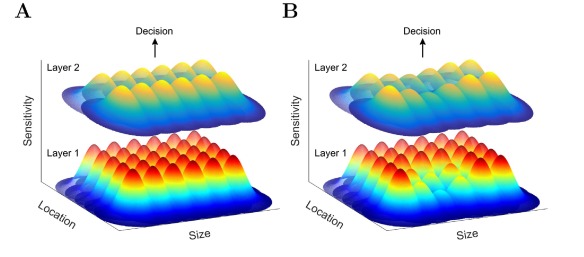Prolonged exposure to a certain size stimulus alters the perceived size of a subsequently presented stimulus at the same location. How the rest of the visual space is affected by this size adaptation, however, has not been systematically studied before. In this study, Altan & Boyaci tested size adaptation at the adapter location as well as the rest of the visual space. Their results showed that the perceived sizes of target stimuli were affected by the adapter, not only at the adapter location but also at other locations. These findings demonstrate that size adaptation causes widespread distortion of the visual space and alters perceived size. Altan & Boyaci discuss possible computational models that may underpin the perceptual effect in their article.
Abstract
It is well known that prolonged exposure to a certain size stimulus alters the perceived size of a subsequently presented stimulus at the same location. How the rest of the visual space is affected by this size adaptation, however, has not been systematically studied before. Here, to fill this gap in literature, we tested size adaptation at the adapter location as well as the rest of the visual space. We used peripherally presented solid discs (Experiment 1) and rings (Experiment 2) as adapter and target (test) stimuli. Observers adapted to a mid-sized stimulus and judged the size of the subsequently presented smaller or larger target stimuli. Results showed that the perceived sizes of target stimuli were repelled away from the adapter size, not only at the adapter location but also at other locations. These findings demonstrate that size adaptation causes widespread distortion of the visual space and alters perceived size. We discuss possible computational models that may underpin the perceptual effect.
